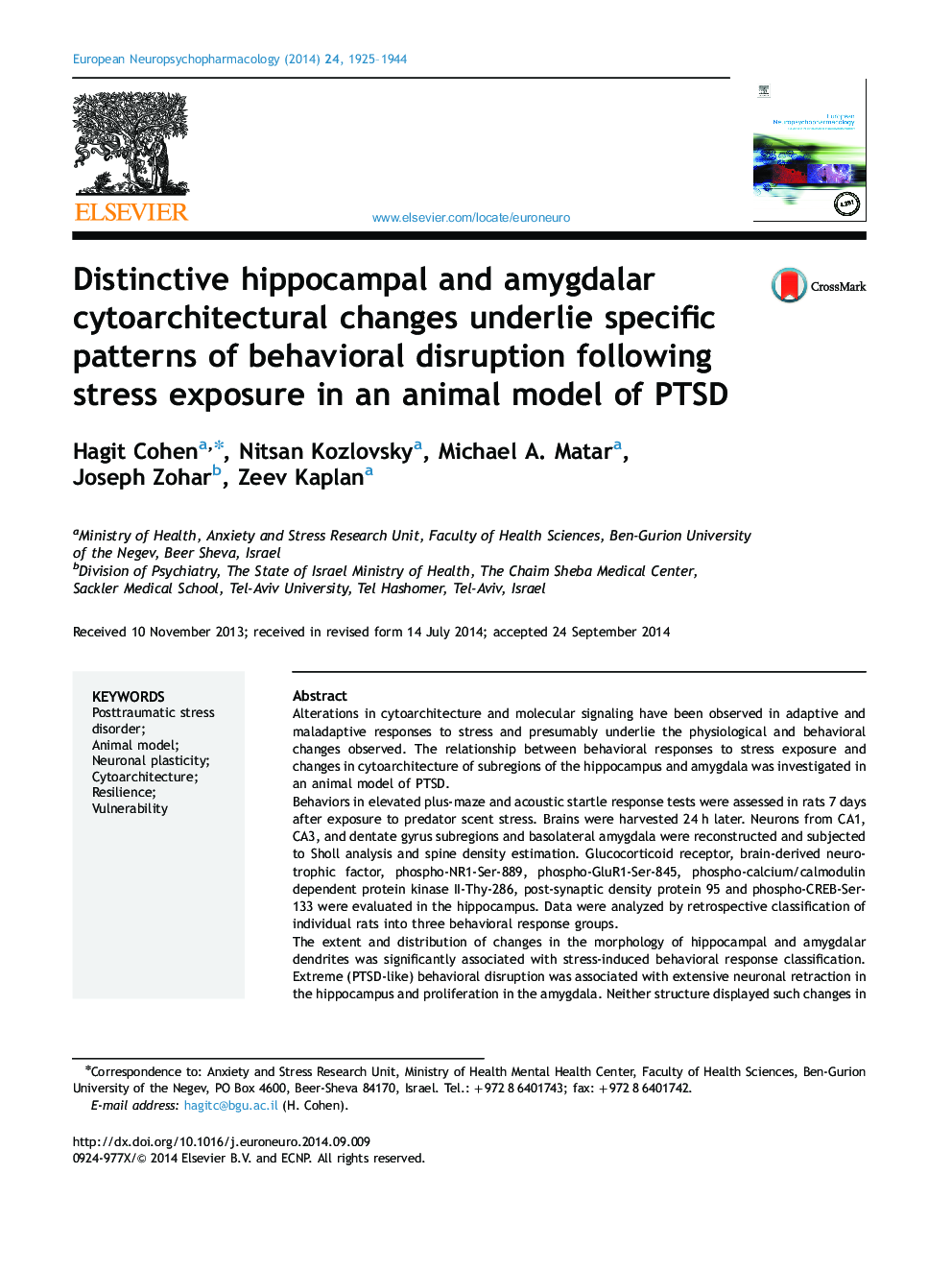| Article ID | Journal | Published Year | Pages | File Type |
|---|---|---|---|---|
| 10298696 | European Neuropsychopharmacology | 2014 | 20 Pages |
Abstract
The extent and distribution of changes in the morphology of hippocampal and amygdalar dendrites was significantly associated with stress-induced behavioral response classification. Extreme (PTSD-like) behavioral disruption was associated with extensive neuronal retraction in the hippocampus and proliferation in the amygdala. Neither structure displayed such changes in minimal behavioral responders. Partial behavioral response was associated with identical changes in the hippocampus only. Patterns of change in requisite molecular signaling genes and endophenotypic markers corresponded to the structural and behavioral responses. The extent and distribution of changes in the cytoarchitecture of hippocampal and amygdalar subregions is directly related to the pattern of behavioral response of the individual to stress exposure.
Keywords
Related Topics
Life Sciences
Neuroscience
Biological Psychiatry
Authors
Hagit Cohen, Nitsan Kozlovsky, Michael A. Matar, Joseph Zohar, Zeev Kaplan,
